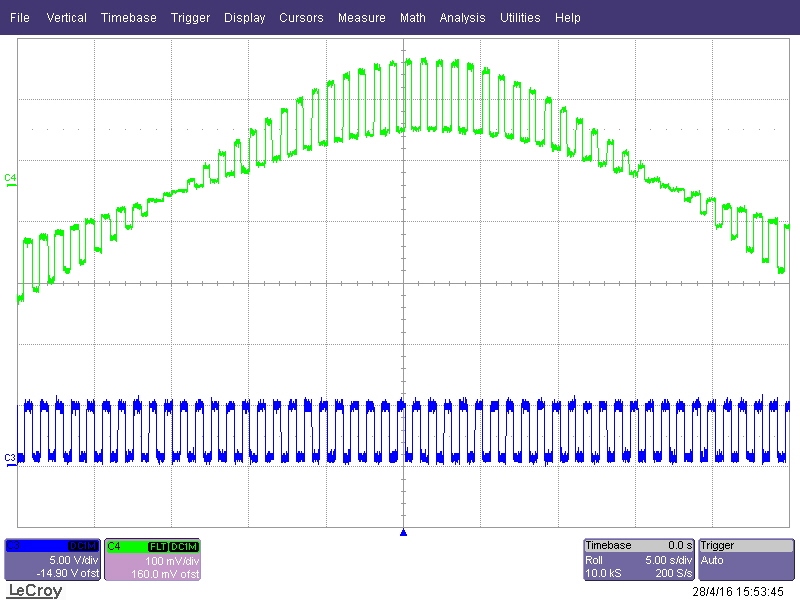Apologies if this has been discussed before but...........I couldn't find the answers in the datasheet or forum.
I'm trying to reduce motor heating and noise on stand still by firstly reducing the current in the windings using the Torque register and then switching to slow decay. (this is great as there is almost no audible noise). However.........When I switch to slow decay I get some very odd happenings with the current level. Please see what I mean below. There is a step clock input of 1Hz (in blue), after 0.4 seconds of no clock inputs the controller turns the current down to 50% and sets the decay mode to slow decay. This is what I get......
At most points the current increases and at the points in the table where the current does decrease it doesn't to the level requested.
To investigate further I just ran the driver IC on slow decay with the same 1Hz step input and I got this wave form out!?! We are still set at 1/16 micro stepping!!! It looks like a half stepping output?!?
If I stay in auto mixed decay mode and just reduce the torque register my plan work perfectly! See below:
Its almost as if ........when I'm using slow decay the IC uses a different lookup table for the sin and cos current tracking which makes it look like half stepping!?!
Is there a way round this or does slow decay work in this unexpected way for a reason?!?
Many Thanks
Nick




